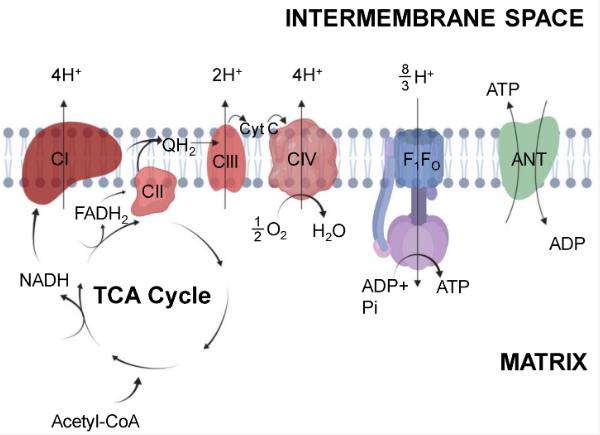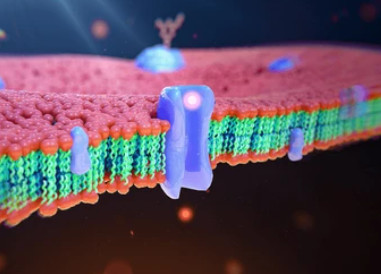Mitochondrial Oxidative Phosphorylation Analysis
Online InquiryMitochondria, a key organelle in the generation and regulation of cellular bioenergetics, supply energy in the form of ATP through the oxidative phosphorylation system (OXPHOS). Therefore, it is not surprising that mitochondrial (dys)function has been implicated in pathophysiological processes and a broad spectrum of diseases, such as aging, metabolic disorders, neurodegeneration, and cancer. Creative Proteomics is a leading service provider of mitochondrial analysis services. Here, we are proud to offer mitochondrial oxidative phosphorylation analysis to our global customers.
Overview of the mitochondrial oxidative phosphorylation system
As the center of cellular metabolism, the mitochondrial oxidative phosphorylation system consists of five enzyme complexes (the NADH dehydrogenase complex, complex I; the succinate dehydrogenase complex, complex II; the cytochrome c reductase complex, complex III; and the cytochrome c oxidase complex, complex IV; the ATP synthase complex, complex V) and two mobile electron carriers that function in the mitochondrial respiratory chain. By coupling the oxidation of reducing equivalents entering the mitochondria with the generation and subsequent dissipation of proton gradients across the inner mitochondrial membrane, this electron transport chain drives the production of ATP, which is subsequently used as the primary energy carrier in almost all cellular processes.
 Fig. 1 Mitochondrial
oxidative phosphorylation. (Lewis, Matthew T., et al, 2019)
Fig. 1 Mitochondrial
oxidative phosphorylation. (Lewis, Matthew T., et al, 2019)
Our mitochondrial oxidative phosphorylation analysis service
Analysis of oxidative phosphorylation and the function of the mitochondrial electron transfer system (ETS) can provide information integrating metabolite uptake and metabolization, enzyme activities in the mitochondrial matrix and coupling of electron transfer and phosphorylation of ADP to ATP, thus reflecting the ability of mitochondria to meet the energy requirements of the cell. Based on various biochemical methods and advanced instruments, Creative Proteomics is able to efficiently and accurately detect changes in the activity of oxidative phosphorylation enzymes and oxygen consumption. Our platform can detect oxidative phosphorylation-type items:
- Oxidative phosphorylation enzyme activity measurement
Our platform uses biochemical methods to efficiently and accurately detect changes in the activity of oxidative phosphorylation-related enzymes. Currently, the following list of substances can be detected:
-Na+K+ ATP enzyme activity
-Ca2+Mg2+ ATP enzyme activity
-Complex I (NADH: ubiquinone oxidoreductase) activity
-Complex II (succinate: coenzyme Q oxidoreductase) activity
-Complex III (ubiquinol: cytochrome c oxidoreductase) activity
-Complex IV (cytochrome c oxidase) activity
-Complex V (ATP synthase) activity
- Oxygen consumption rate(OCR) measurement
As a key indicator of mitochondrial function, OCR is used to study the function of mitochondrial oxidative phosphorylation. The assay typically measures basal respiration under normal conditions and then adds oligomycin to inhibit ATP synthase, which is a significant decrease in OCR, leaving only the oxygen consumption rate due to proton leak. The reduced portion is the oxygen consumption rate of oxidative phosphorylation (ATP production).
- ATP content assay
Report delivery
1. Experimental steps
2. Relevant parameters
3. Images
4. Raw data
5. Mitochondrial respiratory chain complex activity information
If you have any questions or concerns, feel free to contact us at any time. Our goal is to exceed your expectations and provide you with the best service possible.
Reference
- Lewis, Matthew T., et al. "Quantification of mitochondrial oxidative phosphorylation in metabolic disease: application to type 2 diabetes." International journal of molecular sciences 20.21 (2019): 5271.
Related Services
* For Research Use Only. Not for use in diagnostic procedures.








